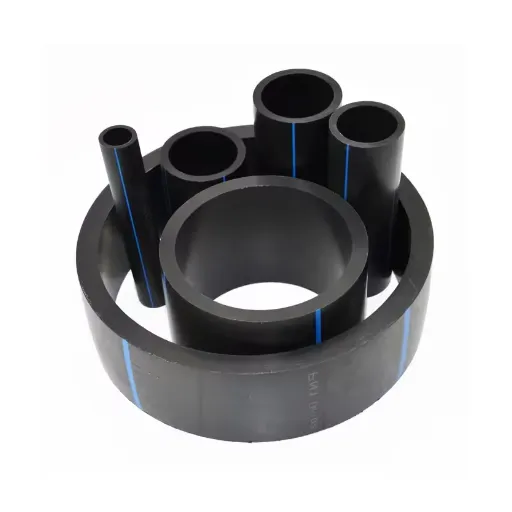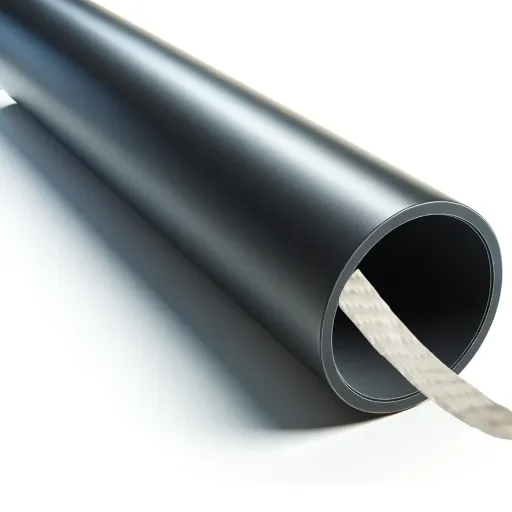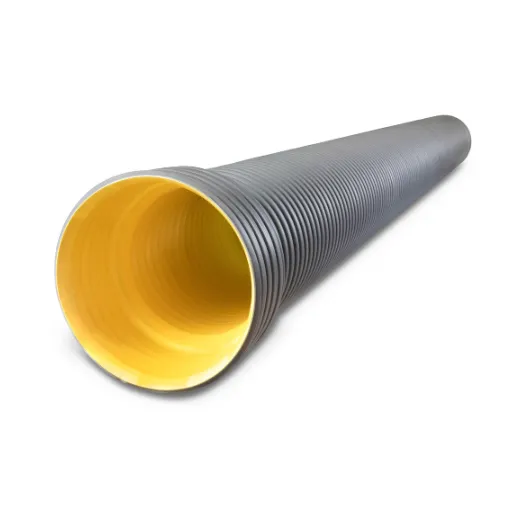When it comes to repairing high-density polyethylene (HDPE) pipelines, precision and reliability are critical. HDPE pipe repair couplings provide an efficient and durable method to address leaks, cracks, or damage that can compromise a pipeline’s performance. But how can you leverage this technology to ensure long-term functionality and efficiency? This article serves as a comprehensive guide to help you understand the mechanics, applications, and best practices for using HDPE pipe repair couplings. Whether you’re a field technician, project manager, or someone tasked with pipeline maintenance, this resource will equip you with actionable insights to make informed decisions and implement effective solutions. Read on to discover how these tools can transform your repair strategies and minimize system downtime.
What Are the Common Methods for Pipe Repair?
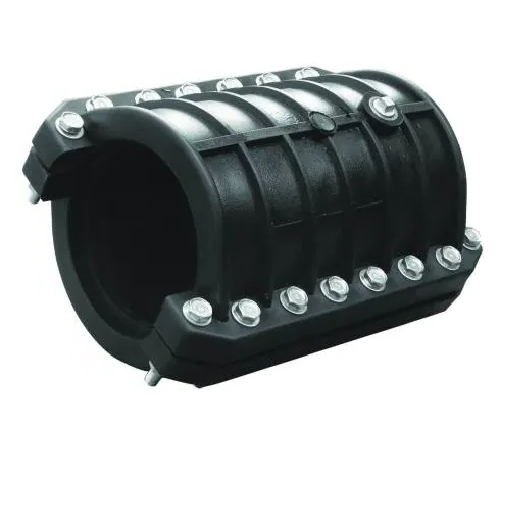
Understanding Fusion Techniques
A combination of thermal and mechanical power is required at the time of joining segments of HDPE pipes and their subsequent activities, such as servicing or repairing the pipes. These types of tasks include, but are not limited to butt fusion, electrofusion, and socket fusion. All techniques utilize a combination of heat and pressure to join pipe segments, molecularly bonding them at a structural level to improve pipeline integrity. This bond incrementally enhances the toughness of the pipeline fusion
- Butt Fusion: The butt fusion technique joins two pipe parts by heating their ends until they reach a certain temperature. Any interchange of temperature, pressure, and dwell time should be controlled, closely monitored, and kept to certain limits at which the pipes do not decompose, and strong as well as durable bonds can be formed.
- Electro fusion: Features a separate kind of fusion generator known as the electro fusion couplers. Electro fusion utilizes fiber hydraulic fittings that assemble the parts of the pipes, which are placed on the bottom with Ceramic motor braces. Uses of this method are ideal for areas where straight pipes and junction connections interplay. Most of the time, these works include fixing broken pipes, repairing them, or working on cross paths that have way too many bends.
- Socket Fusion: With socket fusion, the end of a pipe is placed into a heated fitting with a pipe socket. The contact surfaces are melted to form a strong joint. This method is most often used on smaller diameter pipes as it is simpler and easier. Achievement of a good and reliable bond is made easier by following proper steps, however the overall quality relies greatly on the operator’s skill.
Any operator should remember that each fusion technique has its own purpose, and an appropriate one should be chosen based on operating conditions such as the size of the pipe along with the requirements of the project. The long term viability of fusion joints in HDPE is significantly enhanced by proper preparation, consistent quality control, following manufactuer and indurstry rule guidelines, and observing more than 1 HDPE pipeline guideline.
Utilizing Repair Clamps for Quick Fixes
Repair clamps are critical in pipeline maintenance because they provide quick and efficient methods of addressing leaks and damage without full system shutdowns. These devices are created from high-strength materials like stainless steel or ductile iron, which allows for durability and reliability under varying operational conditions. There are also multiple designs available for these repair clamps, such as single-band, double-band, and multi-section configurations, which make them compatible with varying pipeline sizes and types.
The overall functionality of a repair clamp depends on its capacity to form a fixed, watertight seal over the damaged area of the pipe. This is realized through a well-designed body that employs elastomeric gaskets that as the name suggests seal the pipe and compensate for superficial damages such as pitting or corrosion. In regard to the installation process, it is simple while needing few tools and skills, thus making repair clamps ideal for emergency scenarios.
Another factor to make sure that the repair clamp functions effectively is to comply with operating conditions like pipe material, pressure, and even the external environment. Regular inspections also add to the functionality of the repair clamps, along with specifications from the manufacturers. Repair clamps are a brilliant step forward and cost cost-efficient method of dealing with pipeline issues while having the rest of the system operational.
The Role of Electrofusion Couplings
Electrofusion couplings serve an important role in pipeline repair and construction for plastic pipes like polyethylene (PE) and polypropylene (PP). These couplings apply sophisticated welding techniques by integrating electric heating elements within the pipe to melt its surface and bond it to the coupling material, thus creating a solid connection. With the application of gas distribution, water supply, and industrial fluids, Electrofusion technology guarantees leak-proof connections.
ECUs, control units of electrofusion, serve as specialized apparatuses that manage the weld’s heat and pressure application. Through accomplishing the aforementioned goals, ECUs aid in achieving reliability under heightened pressures and fluctuating temperatures, something that is not possible with other mechanical joints through electrofusion couplings.
The profound impact of having electrofusion joints on resisting environmental stress cracking and corrosion; thereby making them the ideal candidate for placing harsher conditions on pipelines. Improving maintenance strain by reducing joint failure rates complements increased efficiency brought forth by electofusion technology on pipelines, alongside prolonging their operational life.
How to Choose the Right HDPE Pipe Coupling?
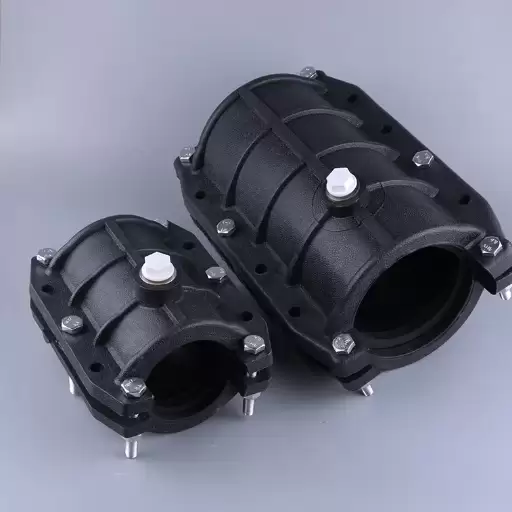
Considerations for Pipe Fitting and Installation
While choosing an HDPE pipe coupling, ensuring optimal operation and efficiency requires looking at a variety of factors, including performance under different operational conditions. The fitment compatibility regarding the coupling and the pipe material and diameter should be considered first because the fit must not be loose or mismatched, which would lead to leaks. Furthermore, understanding the pressure ratings and thermal expansion features of the pipes and couplings is fundamental in reducing the chances of leakage or failure in joints due to shifting operating temperatures and pressures.
Along with these facts, the environmental conditions in which the pipeline will operate are crucial to consider. Couplings may need to have additional resistance to chemicals and thermal stress if the area being worked on is under extreme temperatures and exposure to chemicals. The technique of installation also needs to be looked into; for butt fusion and electrofusion, the skill set requires a focus of the task at hand. Strong and well-protected against corrosion, electrofusion couplings are favorable for use in harsh conditions.
Like other units, proper procedures performed both before and during the installation process should be emphasized, as surface contamination of pipes or any other joint alignment issues can fail at an early stage. Adherence to industry regulations guarantees lasting dependability and upkeep of safety measures.
Comparing Compression and Flange Options
Like compression fittings, flange connections are also chosen based on the unique demands of a given application. Each performs a different specific operational function. A certain type of mechanical work, known as compression, is performed on a sleeve or ferrule which seals a pipe tightly, thus preventing any leakage.
These fittings, along with quick assembly, require light tooling and offer versatile connections, which make them perfect for maintenance or inspection systems that need frequent disassembling. On the contrary, flange connections are robust and highly durable fittings that withstand high internal pressure along with an elevated temperature. These are very reliable in systems where safety is a concern. Bolted flanges are composed of a flat, outwards projecting rim attached to the pipe, which is convertible to a matching flange.
To achieve seal integrity, proper bolt grade gasket material selection, along with the precise amount of torque, needs to be applied whilst bolting to prevent escaping fluids. While it takes longer to set up flanged connections, and more tools are needed compared to compression fittings, they offer extra sturdiness in the long run.
Make sure to take into account the pressure, temperature, the required durability, and the mechanical strength for reusability when deciding on set compression and flange options. Ease of use and low to moderate pressure applications designate merit to compression fittings, while flanges work best in tougher industrial environments where consistent long-term performance is a necessity.
Ensuring Proper Seal and Joint Integrity
The proper selection of materials and components in consideration of the operating environment is imperative to achieving a proper seal and maintaining joint integrity. All potential exposure factors, like pressure rating, temperature range, and chemicals, need to be assessed to determine the best sealing solution. For instance, PTFE (polytetrafluoroethylene) or Viton gaskets are used for their excellent resistance to chemicals and high temperatures.
Equally important to seal success is the installation method. Avoidance of leakage and maintenance of low stress concentration, which can lead to failure, is all possible with proper alignment of joints, applying correct torque, and following the instructions by the manufacturer. Regular inspection and maintenance as they enable detection of component wear, corrosion, or deformation that could lead to catastrophic failure.
Elastomeric compounds and new surface treatments are some of the modern advancements designed to improve seal and joint dependability and durability. Industries are able to achieve maximum performance and service life of important systems with use of robust design principles coupled with constant monitoring systems.
What Are the Steps for Installing a Repair Clamp on HDPE Pipe?
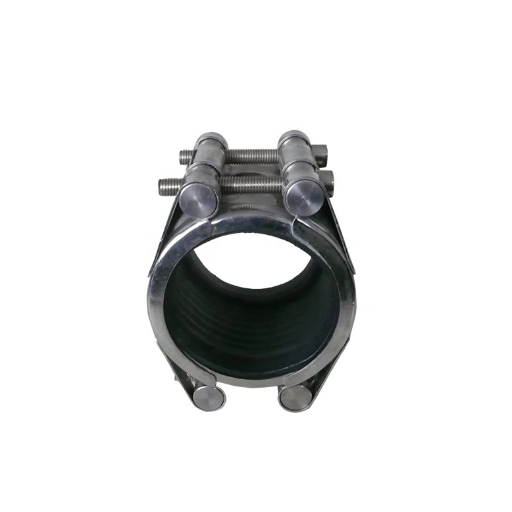
Preparation and Measuring Pipe Ends
Correctly getting ready for the task includes washing the area seal properly to successfully install a repair clamp on a high-density polyethylene (HDPE) pipe. First, finding the damaged piece of the pipe is essential. After that, make sure that the area around the pipe does not contain any obstructions like debris, dirt, or anything that will get in the way during the installation process. During cleaning, make sure to clean the pipe surface thoroughly to improve the seal effectiveness and ensure no contamination happens during the repair.
Measuring correctly begins with the step of using a measuring tape which can also be a pipe caliper. Make sure that the outer diameter (OD) of the HDPE pipe is accurately and fully measured. Pipe dimensions need to be verified because the size of the pipe affects the fit and seal ability of the clamp, combined with the measuring pipe.
Over the area of the damage, check the pipe material to make sure that the structure is intact as well as void of excess wear. Applying a clamp over damaged surfaces will negatively impact the pressure Integrity maintenance. Metadata don’t have the risk of getting leaks, but instead, emphasizing precise measurements allow for secure and long lasting repair.
Applying the Clamp on the Pipe Wall
First, check that there are no contaminants such as oil, moisture, or debris inside the pipe and on the clamp’s surface, as they can affect the seal and the bond of the repair. Ensure that the cleaning solvent used is compatible with the pipe material. After cleaning, the clamp should be positioned such that it covers the section of the pipe that is showing damage or a defect, ensuring that it is centered and aligned properly. The clamp should have an internal surface that matches the contour of the pipe’s outer surface.
All bolts and screws support the same structure and should be tightened in a cross-pattern to balance the loading. During the initial sweeping motion, most of the work will be done. Bolts and screws must be loosened by the same number of turns, and all of the bolts or screws must be turned in a circular manner described prior. These methods will guarantee that unclamping will be equally distributed and make power clamps more efficient.
Upon completing the installation, initiate a pressure test to validate the functionality of the clamp. Usually, this includes progressively raising the pressure of the system to the operational limit while checking for potential leaks. Any leaks that are noticed need to be solved by either adjusting the clamp or looking at the installation for mistakes. Careful methods of applying the repairing techniques will make certain that the repairs, once completed, will withstand the conditions of service while ensuring operational safety standards.
Ensuring a Leak-Free Seal
To obtain a leak-tight seal in a clamping system, all steps of the installation and system testing, as well as monitoring, must be carried out with absolute accuracy. Some of the most important are checking if there is a correct fit between the clamp and the system, alignment, as well as proper torque application, which creates a seal when done uniformly. Equally, the compatibility of the clamp material, about ambient temperature, internal pressure, and chemical properties of fluids, plays a large role in seal integrity.
For testing the durability of the seal, advanced methods such as hydrostatic testing or pneumatic pressure testing can be done. During these tests, pressure is slowly applied, and any signs of leakage are monitored closely. Diagnostics aids such as digital pressure gauges and ultrasonic leak detectors improve warranty work as the rate of leakage detection improves, and deficiencies within the system can easily be rectified. Increasing the reliability of such novel clamps, especially those working under high pressure, will require the use of elastomeric or gasketed seals.
Deficiencies are most likely to arise on seals working under high pressure, thus requiring constant monitoring. Straying from manufacturers’ instructions leads to loss of operational efficiency, thus requiring strict adherence to keeping records of routine upkeep, effectively ensuring optimal productivity while complying with industry safety regulations. To prolong effective wear, overload, and corrosion inspections need to be done frequently; hence why these checks should also be mandatory.
How Does Fusion Welding Enhance Pipe Repair?
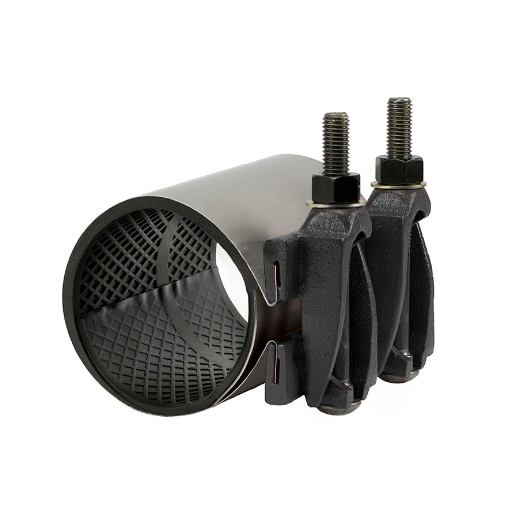
Benefits of Butt Fusion for Polyethylene Pipe
Butt fusion is one of the most efficient techniques for joining polyethylene (PE) pipes because of the rigid, leak-proof connection that is achieved. This method fuses pipes using heat on the ends of the pipes to a specific melting temperature, then pressing them together under regulated force, resulting in a seamless joint. The advantages of butt fusion regarding the installation and maintenance of polyethylene pipes includes:
- No Gaps or Weak Points: Butt fusion does not result in gaps or weak points because it accomplishes a homogeneous joint meaning the joint is equal to or even stronger than the pipe. Hence, the chances of injury when under stress are significantly reduced.
- Lack of leaks: Butt-fused joints do not become loose over time, and so there is a superior seal, resulting in no leaks. Because of that, they can be used in high-pressure and sensitive to water areas.
- Consistency over time: Extreme weather and corrosive substances do not weaken the fused joints, making them highly reliable.
- Savings: Long-lasting connections minimize the cost of repairs and replacements, resulting in savings. Reduced fittings also minimizes costs, making butt fusing cost efficient.
- Meeting Industry Requirements: International standards accept and recognize butt fusion as applicable to critical infrastructure projects because of its reliability.
- Applicability Scope: Butt fusion applies to a large range of pipe diameters and is efficient on small-scale projects, large-diameter gas distribution, water supply, and industrial piping.
Joint efficiency and strength, as well as operational reliability and precison, are achieved through butt fusion’s adherence to strict procedures and advanced fusion technology.
Understanding Electrofusion Processes
Electrofusion is an advanced technique where thermoplastic pipes and fittings are joined together by using electrical resistance heating elements to produce specific levels of heat. This mechanism utilizes coils placed in the fitting and is heated by an electrofusion control unit (ECU) that controls the melting of the fitting and pipe interface. The joint formed after heating and cooling is solid, reliable, and identical in structure to the raw material.
One important benefitra of electrofusion is the joining of pipes in areas of limited movement, occupation and space, foul trenches and other confined spaces. It is ideal for polyethylene (PE) and polypropylene (PP) pipe systems used in water distribution, gas, and industrial networks. In addition, electrofusion reduces the amount of equipment needed at the site, improving the efficiency of the procedure compared to other processes like welding or manual jointing.
To achieve the best results, the voltage, fusion time, and cooling time need to be calibrated and followed through the ECU with data logging functionality for quality assurance and traceability. The success of an electrofusion joint depends strongly on the correct preparation of the pipe ends, which includes mandatory surface scraping to eliminate oxidation as well as alignment and cleanliness of the joint area. This inflexible attention to detail is why critical care infrastructure that requires long-term operational reliability utilizes electrofusion.
What Are the Advantages of Using Corrugated HDPE in Pipeline Repairs?
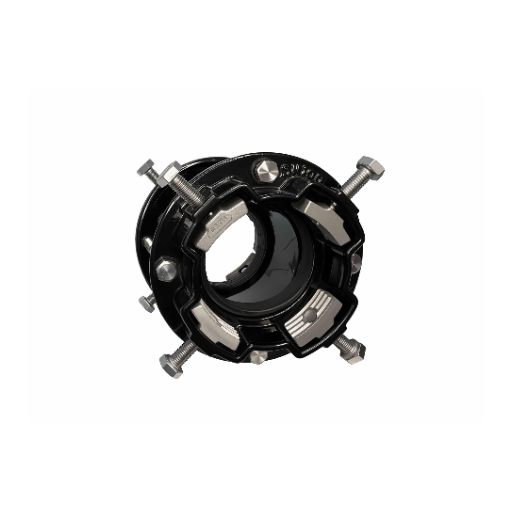
Durability and Flexibility of High-Density Polyethylene
Because of its incredible resistance, High Density Polyethylene (HDPE) is one of the most used materials in the construction and repairing of pipelines. HDPE is able to withstand high impacts, abrasion, and harsh weather which means it is useful in adverse situations like shifting soil or extreme weather conditions. The material absords ground movements without damage, making it suitable for seismic or soil unstable regions.
Moreover, the effectiveness of HDPE against chemicals ensures that it won’t be affected by most of the acids, bases, and even other organic substances found in industrial or natural environments. Such resitance not only enhances the longevity of HDPE pipelines, but also makes the overall maintenance more reliable. In addition to other useful features, its physical strength, unlike steel or concrete, HDPE is lighter, which helps with both transportation and installation.
With the use of HDPE in modern infrastructure, we can see a growing focus on components that offer reliable durability alongside long-term performance. Research has shown that when HDPE pipes are placed under the right conditions, they can sustain value for more than five decades, which shows their reliable value in critical and even non-critical spaces.
Applications in Sewer and Construction, and Repair
The remarkable traits of high-density polyethylene (HDPE)—its chemical resistance, flexibility, and strength—have made it a preferred material in the sewer systems and construction sectors. Seamless HDPE pipes are ideal for long-term use in sewer infrastructure because they are almost completely resistant to corrosion from waste and severe chemicals, including chloroform and sulfuric acid. Besides, their smooth inner surfaces facilitate better flow and decrease the probability of blockages, ensuring reduced energy loss during operation.
In construction and repair applications, the lightweight nature of HDPE aids in transportation and eases the installation process. Using heat fusion methods, HDPE pipes can be fused into leak-proof joints that further increase HDPE’s structural strength. Unlike concrete and metal, traditional materials that face numerous joint failures due to inadequate tensile strength, this fusion technology drastically reduces the chances of joint failure. Moreover, HDPE’s outstanding temperature resistance as well as its ability to endure shifts due to seismic activity or heavy soil movements make it perfectly suited for such environments.
HDPE pipe systems save costs over traditional materials during installations and in lifecycle maintenance. For instance, rehab pipelines using trenchless technology, which is commonly done with HDPE, save disturbance to nature and considerably reduce the time required to complete a project. Such advantages are contributing to the increased use of HDPE in modern construction and sewer repair works.
References
Frequently Asked Questions (FAQs)
Q: What is an HDPE pipe repair coupling?
A: An HDPE pipe repair coupling is a component used to join two sections of poly pipe. It is designed to provide a durable and leak-proof connection, ensuring the integrity of the pipeline system.
Q: How do you choose the right size of repair coupling for a poly pipe?
A: Choosing the right size involves measuring the outside diameter of the pipe. The repair coupling should match the size range of the poly pipe to ensure a proper fit and effective repair.
Q: Can HDPE repair couplings be used on other types of pipes?
A: Yes, HDPE repair couplings can be used on various types of pipes, including ductile iron pipe and flexible pipe. However, it’s essential to ensure compatibility with the specific material and size.
Q: What is the role of an adapter in HDPE pipe repair?
A: An adapter is used to join HDPE pipes to pipes of different materials or sizes. It facilitates the connection between different pipeline components, ensuring a seamless flow.
Q: How do you install an HDPE pipe repair coupling?
A: To install an HDPE pipe repair coupling, first clean the pipe ends and then slip the coupling over one pipe end. Align it with the other pipe section, ensuring it covers both ends evenly, then secure it according to the manufacturer’s instructions.
Q: Are there couplings that can restrain axial movement?
A: Yes, some couplings are designed to restrain axial movement, preventing pipes from pulling apart. These are especially useful in applications where pipe movement may occur.
Q: What are reducing couplings, and when should they be used?
A: Reducing couplings are used to connect pipes of different diameters. They are essential when transitioning between varying pipe sizes to maintain flow consistency.
Q: Can HDPE pipe repair couplings fix a puncture in the pipeline?
A: While HDPE repair couplings are primarily used to join pipe sections, they can sometimes be used alongside a saddle to repair punctures, depending on the damage’s location and severity.
Q: How does the wide range of HDPE couplings benefit pipeline repair?
A: The wide range of HDPE couplings accommodates various pipe sizes and materials, making them versatile for different repair scenarios. This flexibility helps in maintaining the pipeline’s structural integrity and efficiency.




